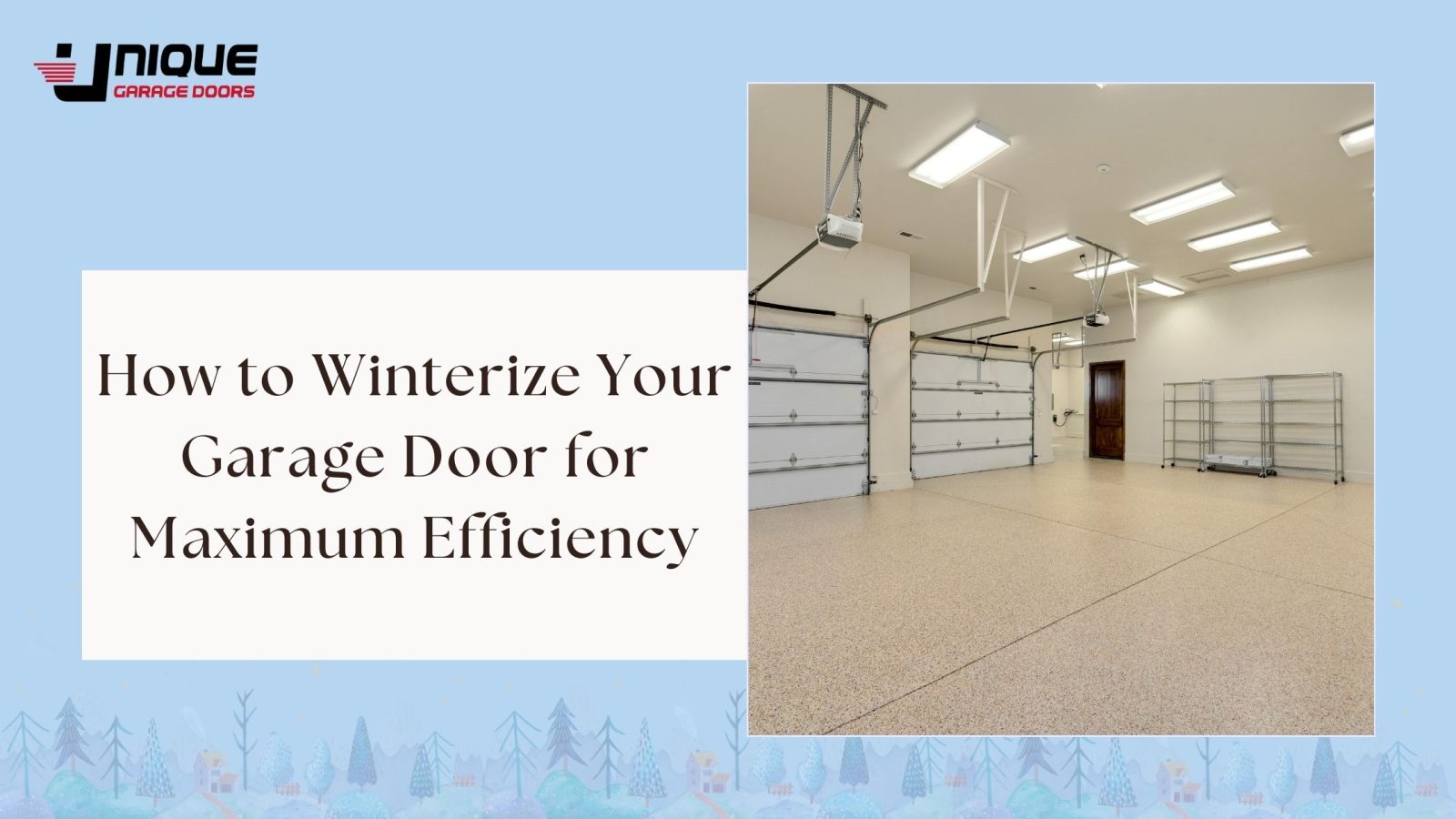As the temperatures drop, your garage door becomes a key defense against the cold. If it’s not properly winterized, you may face higher energy bills, drafts, and even damaged components. A well-insulated garage door keeps your space warm, efficient, and protected during harsh winters.
Follow these easy steps to ensure your garage door is ready for winter.
1. Inspect Your Garage Door for Damage
Before winter sets in, check your garage door for any visible issues. Small cracks or misaligned panels can let cold air seep inside.
Look for Gaps and Cracks
Run your hand along the edges. If you feel cold air, you might have air leaks. Small gaps lead to heat loss and force your heating system to work harder.
Check the Weather Stripping
The weather stripping at the bottom of your garage door blocks cold air, snow, and debris. If it’s cracked, brittle, or missing, replace it immediately.
2. Lubricate Moving Parts
Cold temperatures can cause garage door components to stiffen. Use a high-quality lubricant on rollers, hinges, and springs to prevent squeaking and wear.
Best Lubricant for Garage Doors
Use a silicone-based lubricant for smooth operation. Avoid WD-40, as it can attract dust and cause buildup.
3. Upgrade to an Insulated Garage Door
If your garage feels too cold, consider upgrading to an insulated garage door. This reduces heat loss, lowers energy costs, and keeps your space comfortable.
Best Insulated Garage Door Materials
- Steel with polyurethane insulation – Offers high durability and energy efficiency
- Wood composite doors – Provide insulation with a stylish appearance
- Fiberglass doors – Resist moisture and provide moderate insulation
For expert advice on choosing an energy-efficient garage door, visit Unique Garage Doors.
4. Seal the Garage Door Edges
Even the best garage door insulation won’t work if the edges aren’t sealed.
How to Seal Garage Door Edges:
- Install rubber seals around the door frame
- Apply foam tape on the sides
- Use a garage door threshold seal to block cold air
Sealing your garage door prevents heat loss and drafts, making your space warmer and more energy-efficient.
5. Adjust the Garage Door Opener Settings
Your garage door opener might struggle in freezing temperatures. Adjust the force settings to ensure smooth operation.
How to Adjust Garage Door Opener for Winter:
- Increase the closing force slightly
- Check the auto-reverse function for safety
- Test the sensor alignment to prevent malfunctions
6. Keep Snow and Ice Away from the Door
Winter brings snow buildup near the garage door, which can lead to seal damage and freezing issues.
Prevent Garage Door Freezing:
- Clear snow and ice from the bottom seal
- Use rock salt or sand to prevent ice formation
- Apply petroleum jelly on rubber seals to keep them flexible
7. Test the Balance and Alignment
A misaligned garage door won’t seal properly, letting in cold air.
How to Check Garage Door Balance:
- Disconnect the garage door opener
- Manually lift the door halfway
- If it stays in place, it’s balanced. If it falls or rises, adjust the spring tension.
For professional garage door maintenance, contact Unique Garage Doors.
8. Install a Garage Heater (Optional)
If you use your garage as a workspace or storage area, consider installing a garage heater.
Best Garage Heaters for Winter:
- Electric garage heaters – Energy-efficient and easy to install
- Infrared heaters – Provide instant warmth
- Propane heaters – Ideal for large garages
Final Thoughts: Get Your Garage Door Ready for Winter
Taking these winterizing steps will keep your garage door efficient, durable, and warm throughout the season. A well-maintained garage door not only improves energy efficiency but also extends its lifespan.
Need help with garage door insulation or repair? Visit Unique Garage Doors for expert solutions tailored to your needs. Stay warm and winter-ready! ❄️

